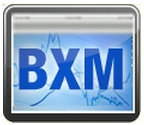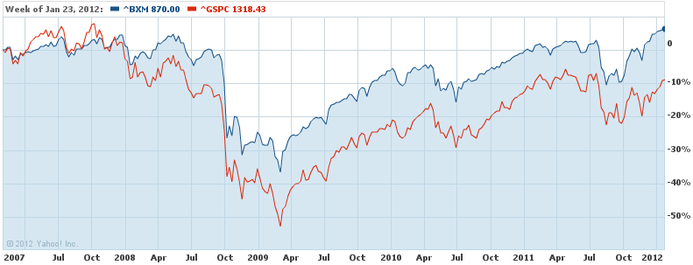
The hoopla around this index is not surprising given that it has outperformed the S&P 500 index insofar as risk-adjusted return in concerned. With investors hungry for returns yet also weary from the volatility seen during the 2008/2009 financial crises, the buy-write ETF offers an attractive alternative to a passive long index fund.
The first question is: What exactly is a buy-write strategy and the BXM index?
The term "buy-write" was coined by the CBOE (which was one of the first companies to compile an index reflecting the returns of a covered call index strategy). The premise is simple - The CBOE's BXM index represents a strategy that:
| (1) buys a S&P 500 stock index portfolio, and (2) "writes" (or sells) the near-term S&P 500 Index (SPXSM) "covered" call option, generally on the third Friday of each month. |
The key advantage of a buy-write strategy is the superior risk/return profile. The idea of "better risk adjusted returns" isn't hollow rhetoric. There is plenty of justification to be found in a growing body of literature examining the strategy's characteristics. In one of the more comprehensive studies to date, Kapadia and Szado (in a September 2011 paper "15 Years of the Russell 2000 Buy‐Write") show that a strategy of selling out-of-the-money covered call options on the Russell 2000 produces higher returns than a simple Russell 2000 position. Further, the buy-write strategy comes with about a third less overall volatility than the pure long Russell 2000 strategy.
| As a general rule of thumb, a buy-write strategy should produce returns similar to (or slightly less than) the S&P 500 index, but with about 50% to 70% of the volatility. |
The key point of all this is that a buy-write ETF in a margin account can provide more bang for the buck than your traditional S&P 500 ETF. As modern portfolio theory teaches us, smart investors should always seek out higher risk-adjusted return investments and simply leverage up to a level of risk commensurate with their own unique risk appetite.

 RSS Feed
RSS Feed
